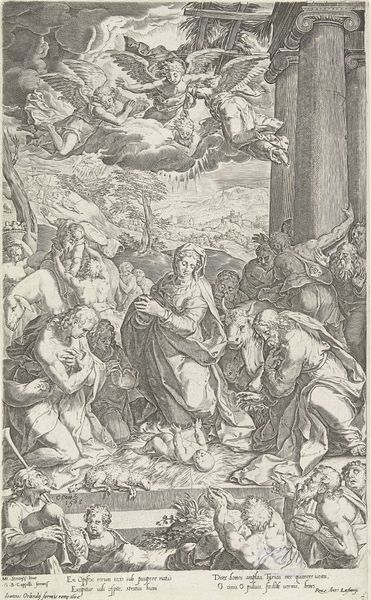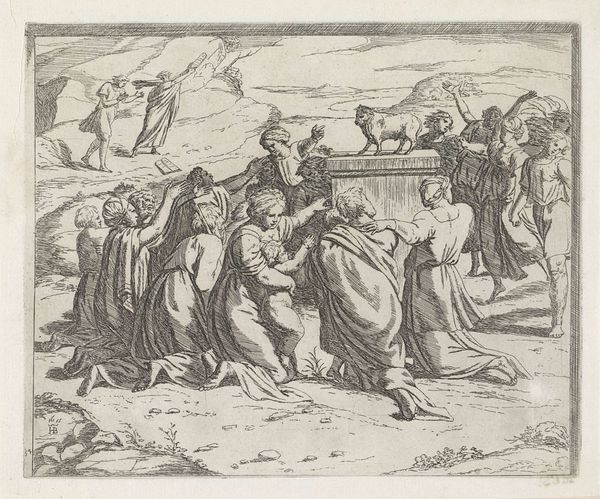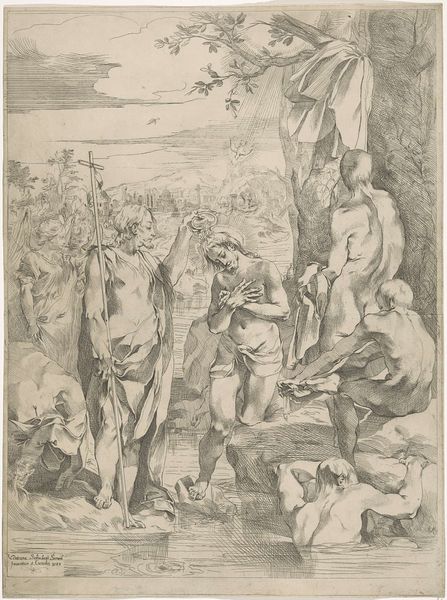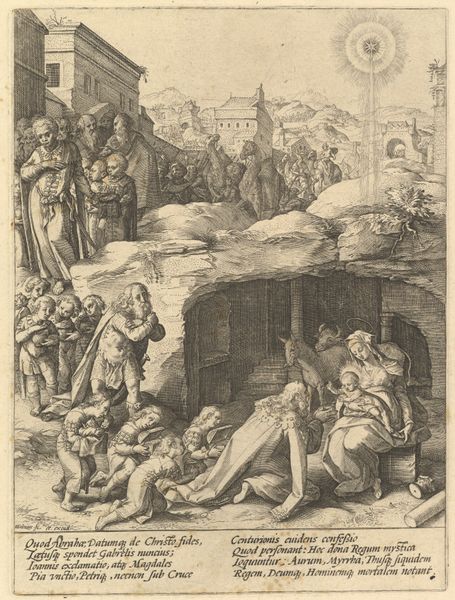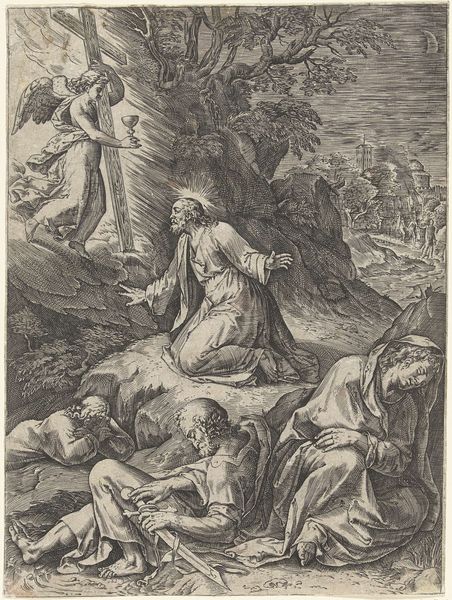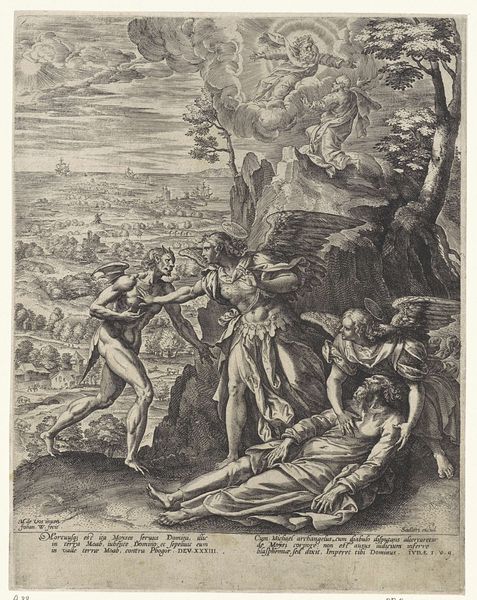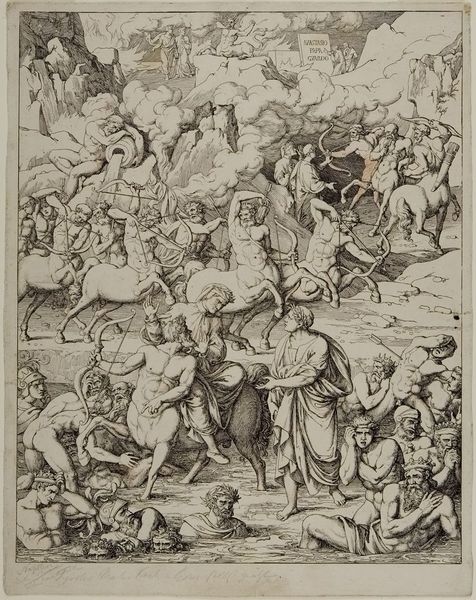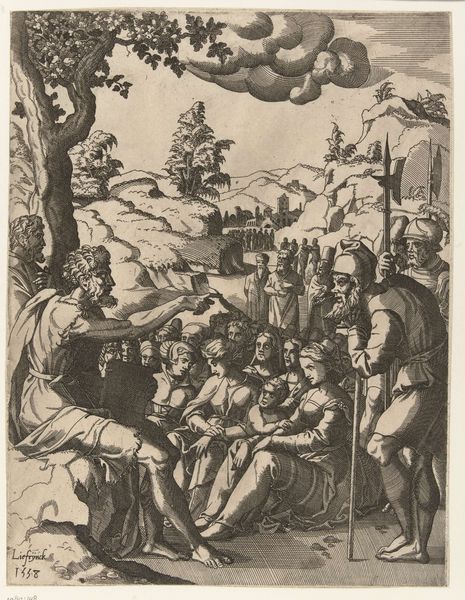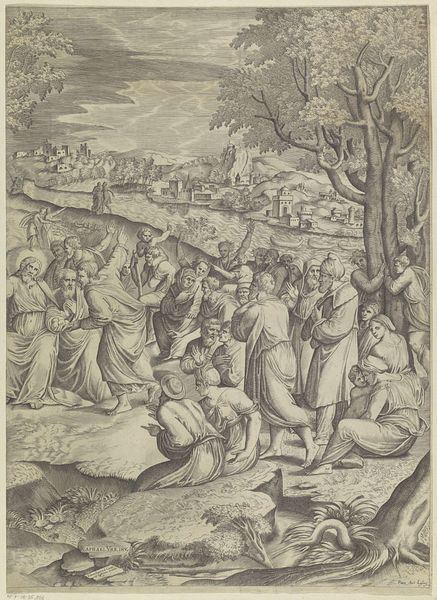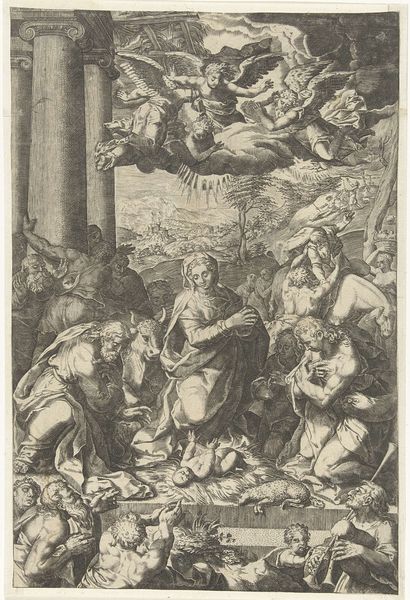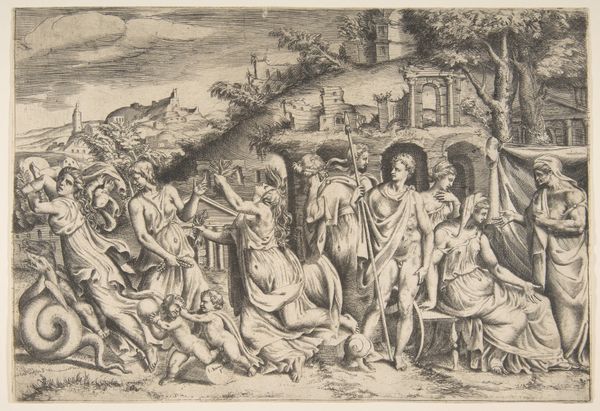
carving, print, engraving
#
carving
#
baroque
# print
#
figuration
#
history-painting
#
engraving
Dimensions: height 389 mm, width 309 mm
Copyright: Rijks Museum: Open Domain
Pieter Jalhea Furnius created this engraving, "Bewening van Christus," sometime between 1545 and 1610. The composition draws the eye immediately to the body of Christ, centrally placed and illuminated against the darker tones of the surrounding mourners and landscape. Consider how Furnius uses line and form to guide our emotional and intellectual response. Notice how the dense network of fine lines creates a rich texture, especially in the drapery and rocky landscape, which evokes a somber and weighty atmosphere, fitting for the scene of lamentation. The artist employs a complex interplay of light and shadow achieved through the density and direction of lines. This establishes depth and volume, but also heightens the drama inherent in the subject. The landscape backdrop is not merely a setting, but an integral part of the work’s semiotic structure. The crosses on the hill signify the events leading to this moment, while the cave and gnarled tree create a visual metaphor for entombment and the natural cycle of death and rebirth. The figures are arranged to emphasize collective grief. The overall effect of the composition serves to create a contemplative space, prompting the viewer to reflect on themes of mortality, faith, and redemption.
Comments
No comments
Be the first to comment and join the conversation on the ultimate creative platform.
